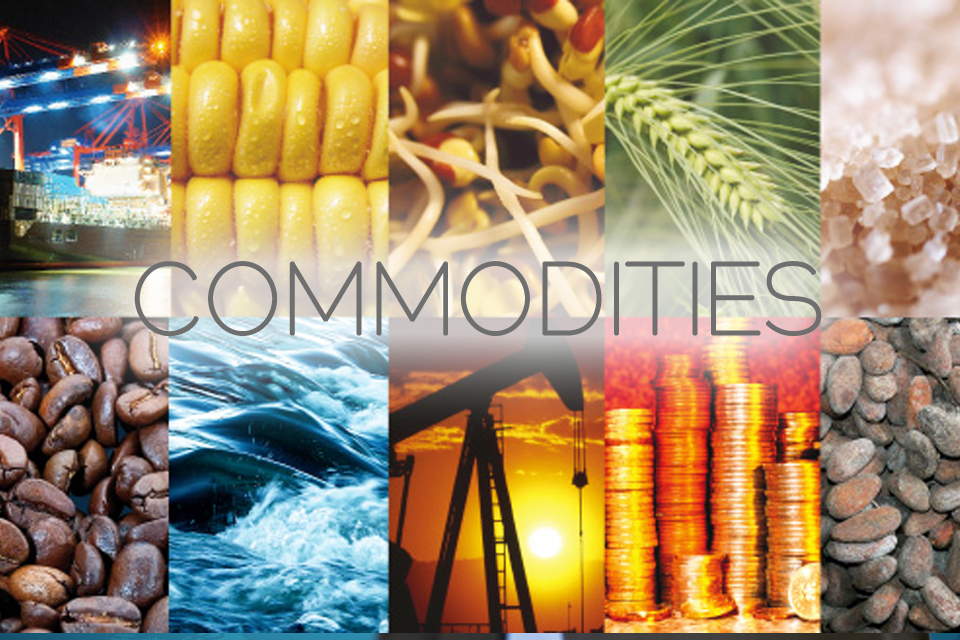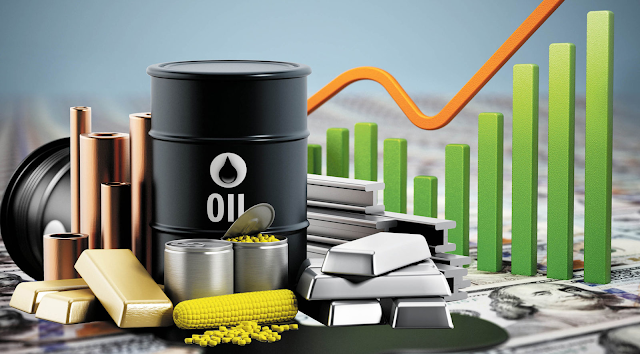U.S. inflation rate took the headlines as it hit a record 40-year high of 8.6% in May 2022. This prompted the Federal Reserve to take an aggressive stance to accelerate the subsequent interest rate hikes and put a lid of the soaring inflation.
Apart from the massive ‘money-printing’ stimulus, China’s supply chain disruptions and the Russia-Ukraine conflict have played a major role for the elevated inflation rates.
Impact of High Inflation
In effect, it resulted in serious percussions such as shortage of semiconductor parts, higher oil prices and even a chicken export ban due to increased chicken feed prices!
Many analysts and experts are calling for the start of a commodity super cycle that could last several years, fuelled by decades of low interest rates and underinvestment in downstream production.
With that in mind, investors might actually want to add some exposure to the commodity boom or also hedge against soaring inflation rates.
In this article, we will dive into some commodity basics and how the average joe can partake on the future market movements of commodities via contract for differences (CFDs).
4 Primary Types of Commodities
For a quick background, commodities are raw materials that are used to produce finished goods, including agricultural products, mineral ores and fossil fuels.
A good example is how lithium ore are mined and used in the production of glass, aluminum products, and electrical batteries.
In fact, EV car makers are so hungry for lithium resources that they have been partnering miners to secure the supplies beforehand; like how Tesla signed a binding four-year offtake deal with Australian lithium company – Core Lithium (ASX:CXO) in March 2022.
In general, commodities can be broken down into 2 main classes – hard and soft. Hard commodities require mining or drilling to find while Soft commodities are grown or ranched.
They are then further split into four primary types of commodities:
- Energy (Hard) – Other than the commonly known oil and coal resources, this segment also include natural gas, ethanol and even various forms of renewable energy like wind power and solar power.
- Metals (Hard) – The world’s tallest skyscrapers and factories cannot be built without these precious metals like iron ore, tin, copper and more.
- Agricultural products (Soft) – Agriculture are broken down into 2 types as well:
- Edible goods such as cocoa, grain, sugar and wheat and
- Non-edible products, such as cotton, palm oil and rubber.
- Livestock (Soft) – Livestock includes all live animals reared for our consumption such as chicken and hogs.
The above list goes to show how commodities play a crucial role in our day-to-day lives and explains why the demand-supply imbalance can cause ripple effects (inflation) to the whole world.
On the cusp of a Commodity Super Cycle
For starters, the commodity market hinges on simple supply-demand dynamics of the whole world.
Global commodity prices have moved higher in the past 2 years, partly due to geopolitical issues such as Russia-Ukraine war and China’s supply chain bottleneck.
The strong price gains have led to analysts like Goldman Sachs forecasting on the beginning of a commodity super cycle in year 2021.
A commodity super cycle usually refers to a sustained spell of increased demand growth that producers struggle to match, sparking a rally in prices that can last years or in some cases, a decade or more.
Sky High Demand for Commodities
On the demand side, increasing commodity prices are driven by the post-Covid economic recovery which led to an insatiable demand for raw materials and manufactured materials.
In addition, climate change is urging the switch to EVs and more renewable energy sources. This energy transition is set to see demand for metals accelerate sharply in the coming years as demonstrated by the copper price chart below:
Commodity Supply Shock
Moving onto the ‘Supply’ end, commodities producers struggle to produce enough supply due to severe under-investment in production over the past decade.
This is further exacerbated by the companies’ reluctance to increase production capacity without clear government’s directions too.
A recent example in June 2022 is where Chevron CEO Michael Wirth pushed back against Biden’s criticism of the oil industry over high energy costs. He went along the line of saying:
“(the) oil industry needs clarity and consistency on policy matters ranging from leases and permits on federal lands, to the ability to permit and build critical infrastructure and regulation that considers costs and benefits”.
Moreover, there is often a time lag in supply coming online even if producers were to initiate new projects and start ramping up production. In essence, prices cannot subside until supply is overshot, or growth slows down in the next couple of years.
3 Methods to Invest in Commodities
The aforementioned pointers are setting the groundwork for a commodity boom that could last several years — a super cycle.
If this is the case, investors might want to add some exposure to the commodity segment through 3 common methods.
1. Buy Stocks of Commodity Producers
Probably the most straightforward way is to invest in the shares of commodity-producing/trading firms.
There are 2 main benefits with this approach:
1) If the price of the commodity rises, the underlying company usually sees its profit rise;
2) The company can grow faster and bigger (than the commodity price gains) through its re-investment into increased production over time.
Gold miner CNMC Goldmine and palm oil firms like Golden Agri-Resources and Bumitama Agri are some classic examples.
2. Buy Commodity Funds or ETFs
Investors who prefer to have a fuss-free option of getting direct exposure to physical commodities without the hassle of actually owning the goods or trading on the futures market can opt for commodity funds or ETFs.
For example, an investor bullish on oil prices can invest in this fund called ‘United States Oil Fund LP’. The Fund seeks to reflect the performance of the spot price of West Texas Intermediate light, sweet crude oil delivered to Cushing, Oklahoma by investing in a mix of Oil Futures Contracts and Other Oil Interests.
On top of that, choosing an oil ETF would allow you to remove the guesswork of finding the right commodity stock because you are essentially owning shares of several oil companies in one go.
That ‘diversification’ helps mitigate the company-specific risks of investing in a mis-managed commodity producer that does poorly when its peers are prospering.
3. Commodity Futures
A commodity futures contract is an agreement to buy or sell a particular commodity at a future date. Most participants in the futures markets are commercial or institutional commodities producers or consumers.
However, an average joe usually gets into a futures contract to bet on the directional move of the underlying asset.
For instance, if you are bullish about oil prices, you can purchase the relevant West Texas Intermediate (“WTI”) Crude for a particular month and year i.e. Sep’22.
West Texas Intermediate (“WTI”) is a grade or mix of crude oil and the term is also used to refer to the spot price, the futures price, or assessed price for that oil. Simply put, WTI usually refers to the WTI Crude Oil futures contract traded on the New York Mercantile Exchange (NYME).
The advantages of trading futures over stocks or ETFs are that you can get started at a fraction of the cost with boosted buying power due to leverage. Moreover, futures typically allow lower trading costs and allows you to go for ‘short’ positions to potentially hedge your portfolio too.
Conclusion
According to fxstreet.com, for the first time in decades, the world is running out of commodities and facing a supply shortage due to a “triple deficit” – low inventories, low spare capacity and low investment.
Hence, as global demand continues to outstrip supply, the odds for a commodity boom are getting higher as the days pass – evident from run-of-the-mill inflation and impending climate change.
A good way to tap on this commodity super-cycle is to open an account on Tickmill’s world-class platform where you can gain direct access to the world of Futures with some of the lowest commissions.
Tickmill’s no-frills futures trading also offers fast, reliable execution and the access to 6 globally regulated Futures exchanges: CME, CBOT, NYMEX, COMEX, EUREX and the Small Exchange.
This is the reason why they can offer a big range of asset classes including Agriculture, Energy, FX, Indices, Metals and Interest Rates.
That’s not all!
You can even do a Test Trade to compare with other brokers totally risk free with a Pre-loaded US$30 in your Tickmill Live account (and bring home the profits!). Click here to get started!
Disclaimer: CFDs are complex instruments and come with a high risk of losing money rapidly due to leverage.



